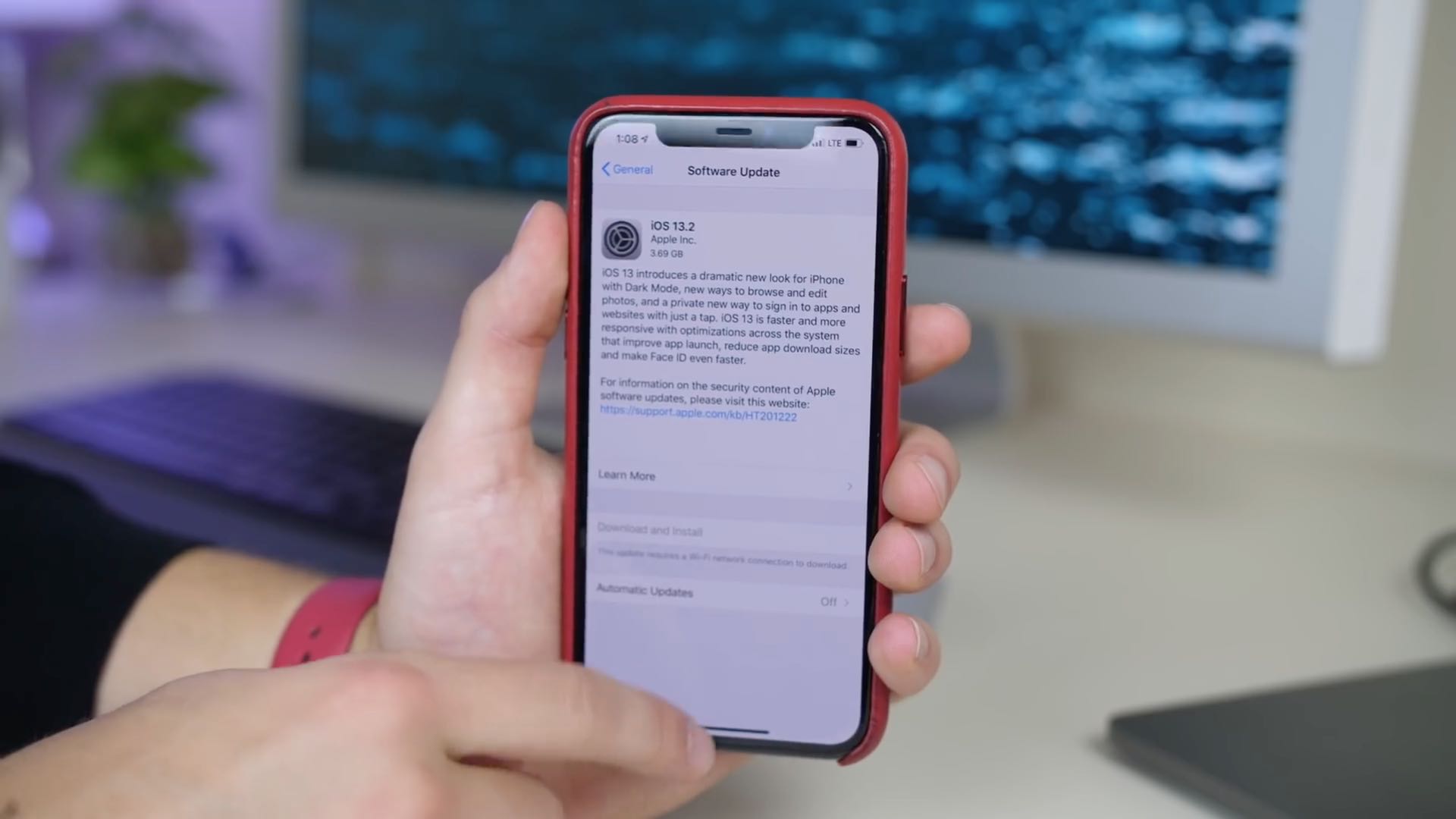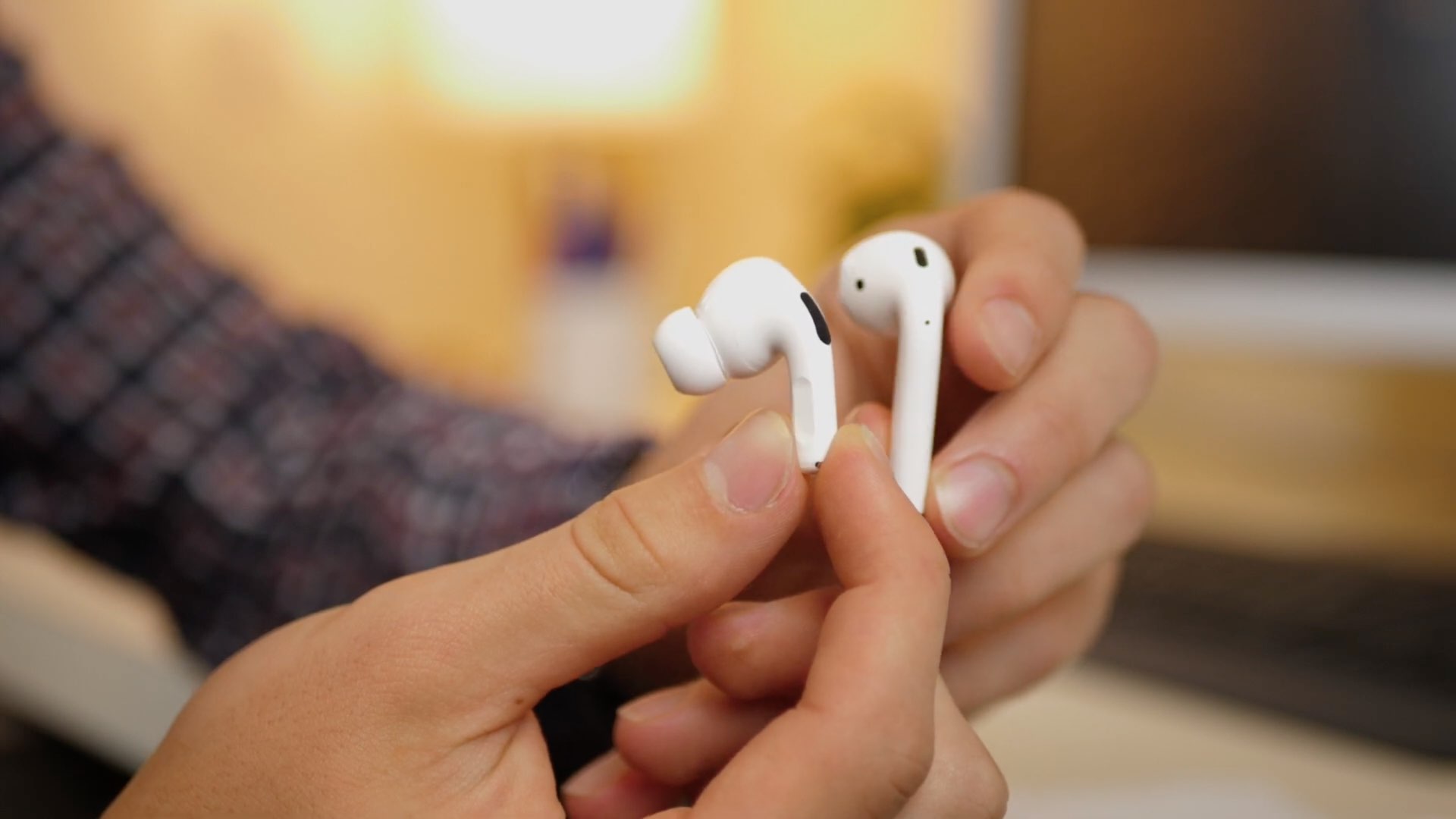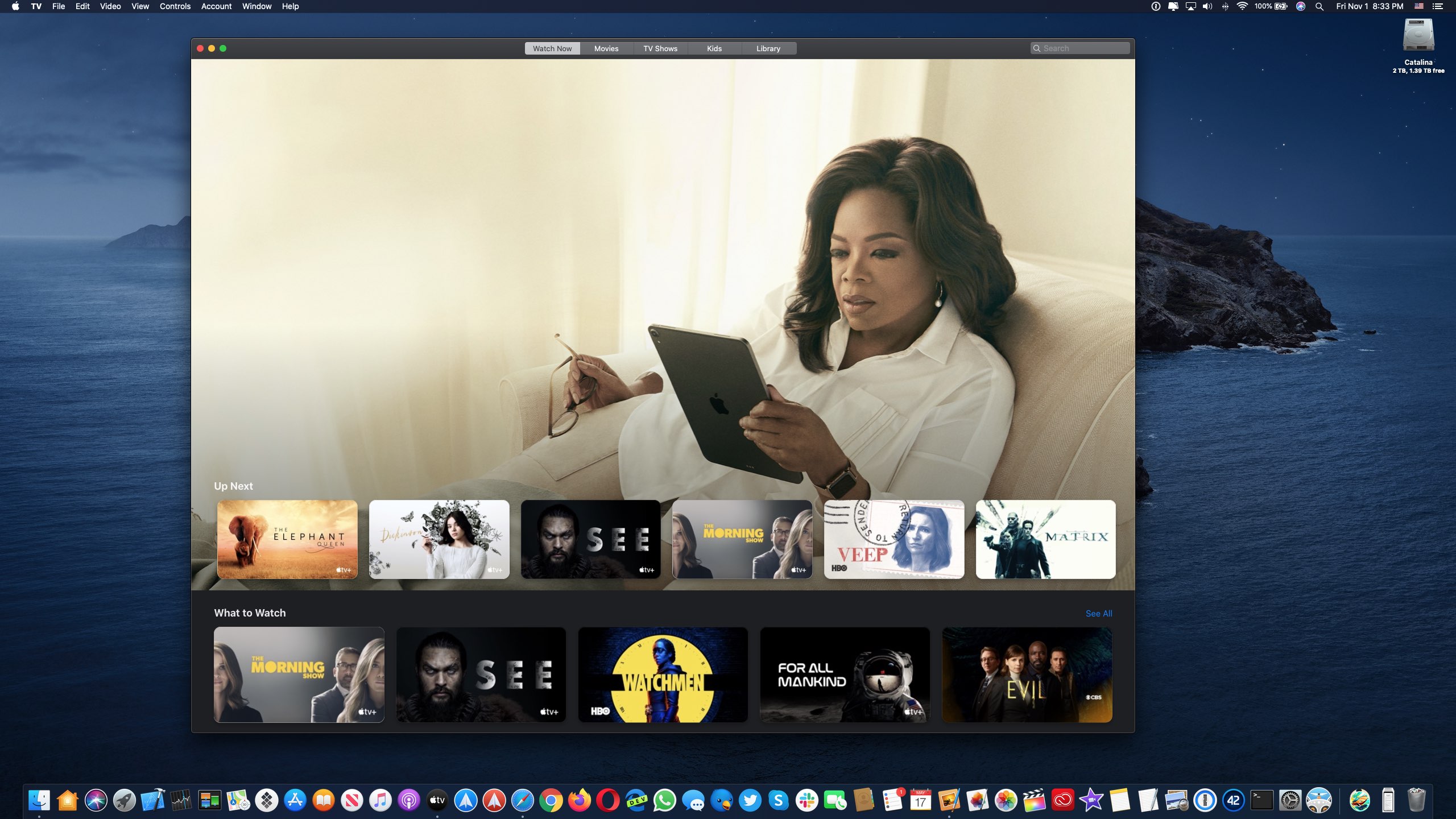 Apple news this past week was punctuated by four spotlight events: The release of iOS 13.2, the introduction of the new AirPods Pro, Apple’s quarterly earnings announcement, and the release of Apple TV+. Let’s look into each of these in more detail in this week’s editor’s roundup.
Apple news this past week was punctuated by four spotlight events: The release of iOS 13.2, the introduction of the new AirPods Pro, Apple’s quarterly earnings announcement, and the release of Apple TV+. Let’s look into each of these in more detail in this week’s editor’s roundup.
iOS 13.2 released
 After a lengthy public beta period, Apple finally released iOS 13.2 on Monday and brought with it the long-awaited introduction of Deep Fusion, computational photography functionality Apple developed for the A13 Bionic processor used in the iPhone 11 series. Deep Fusion matches multiple exposures and reduces noise to produce more detailed photos especially in medium and low light conditions.
After a lengthy public beta period, Apple finally released iOS 13.2 on Monday and brought with it the long-awaited introduction of Deep Fusion, computational photography functionality Apple developed for the A13 Bionic processor used in the iPhone 11 series. Deep Fusion matches multiple exposures and reduces noise to produce more detailed photos especially in medium and low light conditions.
Deep Fusion and new adjustable video resolution and frame rates were specific to iPhone 11 users, but everyone got dozens of new emoji, some new Accessibility options, improved privacy settings for Siri and Dictation, some UI improvements including an easier process for deleting apps from the Home screen, and Announce Messages with Siri, which makes it possible for you to have messages read aloud without having to unlock your device first.
Unfortunately, iOS 13.2’s release didn’t go off without problems. Some HomePod users discovered that their devices were bricked following the update. After updating, HomePod users who reset their devices or removed them from the Home app suddenly found themselves unable to communicate with the HomePod at all.
Apple followed up with a 13.2.1 update to correct the issue. It appears that for now, users with bricked HomePods will need to visit their local Apple Store or authorized service provider to resurrect their speakers, unfortunately.
That isn’t the only problem. The usual spate of complaints about excessive battery drain pop up almost every time Apple posts a point update to one of its operating systems; that’s almost always attributable to an increase in background processes and housekeeping kicked up by the OS change. What’s new this time around is a “very aggressive” change to RAM management seen by users that’s causing devices to close apps and stop background tasks more frequently than 13.1 did. There’s been rampant speculation why Apple may have made these changes, but the bottom line is that it’s affecting people’s ability to multitask on their iOS 13.2-equipped devices, which is not good.
From the outside, it really looks like Apple’s QA on this round of updates is fraying at the seams. And it doesn’t just matter to bleeding-edge early adopters like us. When I talk to the average person in the street about how they’re using their iPhone or iPad, I’ve seen a phenomenon grow over the past few years: More folks are reluctant to update or upgrade their devices to the latest release, because they’re afraid something will break. They’re afraid something will break because they’ve already had that experience, and the old adage “Fool me once, shame on you” applies.
That reluctance in turn exposes more Apple device users to potential problems when they finally update. It also increases the risk they face by not incorporating security patches and other timely changes which are essential to keeping their gear working well, and securely. It all speaks directly to Apple’s inability to manage these updates effectively, and that is not good.
The reasons why Apple seems to be having trouble here are myriad. Apple’s dramatically complicated the code base of all of these devices over the years, yet they’ve stubbornly maintained the same annual update cycle they’ve insisted upon for most of the last decade. Occasionally we hear grousing from anonymous current and former engineers and managers at Apple about the company’s internal management practices – or lack thereof – which contribute to these problems, including a lack of interdepartmental communications, a focus on new feature novelty, and a disregard for focusing on bug fixes.
AirPods Pro make their debut

AirPods Pro share the same iconic white design as their forebears but sport Active Noise Cancellation (ANC), flexible and replaceable silicone ear tips that come in three different sizes, a rechargeable case that works with Qi wireless charging mats, adaptive EQ, and a Transparency mode that helps you hear what’s going on outside.
Powered by the same H1 custom silicon that Apple previously introduced in the second-generation AirPods and the PowerBeats Pro, the AirPods Pro deliver about four hours and a half hours of listening time per charge when used with ANC, about 30 minutes less than the AirPods. In total, you can expect about 24 hours of listening time if you drain the charging case battery, which also comes with a USB-C to Lightning cable for fast charging when you’re away from your Qi mat. If you’re curious about the differences between the AirPods, AirPods Pro and PowerBeats Pro, I’ve broken it down for you in a comparison.
There’s a lot to love about the new AirPods Pros, including IPX4 water resistance, which means you can sweat on these and even run in the rain without worrying about shorting them out. Early reviews have been overwhelmingly positive, and I’m particularly happy that Apple is, at last, providing flexible silicone ear tips, because I’ve never been able to get Apple earbuds to rest comfortably in my ears, yet I have a pair of $25 no-name Bluetooth earbuds I got from Amazon years ago which sit in my ears just fine.
For my part, I’m taking a wait and see approach to the AirPods Pro. It’s not that I don’t like them – and some of my iDB colleagues already have theirs in hand and love them to bits. It’s just as a New Englander born and bred, I’m a bit of a Yankee spendthrift at heart. I’m a firm believer in getting the most of of my existing investment. Heck, I’m writing this to you from a 2012 MacBook Pro I recently resurrected with a RAM upgrade and SSD, rather than invest in a brand new MacBook Air. I drive a 13-year-old car with well over 200K on the odometer. And more to the point, I have a set of first-gen AirPods that still get the job done. Sure, they drive me nuts because they fall out of my ears because they don’t fit right, but that alone isn’t reason enough for me to toss them or hand them down to someone else in my family. I’ll run them into the ground, then I’ll think about replacing them with AirPods Pro. Or maybe PowerBeats Pro, if they do a nice purple color.
Our own Harris Craycraft has the scoop on the AirPods Pro in this iDB video:
Apple keeps making money
Apple announced its fourth quarter earnings for its fiscal 2019 at the close of the markets on Wednesday. The company recorded a better-than-anticipated $64 billion in revenue for the quarter, easily beating most Wall Street estimates.
iPhone and Mac sales slid, though Apple said that iPhone sales will return to a growth trend in its fiscal 2020, which has already begun. The company’s China phone sales didn’t lag as much as analysts expected it to, a good sign that Apple’s been able to successfully navigate the treacherous waters of the ongoing trade dispute between the U.S. and China – and that Chinese consumer continue to have strong demand for Apple products despite the best efforts of the government and Chinese businesses to encourage their consumers to buy local instead.
The big standout for this quarter was the explosive growth of Wearables and Services. Wearables include the Apple Watch and AirPods, and the Apple Watch has seen just huge uptake year-over-year. Three of every four people walking into an Apple store to buy an Apple Watch are new to the product, according to Apple. And literally every one of them is already an iPhone customer, because the watch is still largely useless without one. At $6.5 billion in revenue, Wearables is already a bigger revenue-generator to Apple than the iPad is, and is closing in fast on the Mac.
Apple’s Services segment is already a juggernaut – $12.5 billion in revenue this past quarter. Services describes Apple’s business from iCloud subscriptions, Apple Music, the nascent Apple Arcade and Apple TV+ services, and now Apple Pay. Rewind a decade when Apple CEO Steve Jobs described this effort as largely a “hobby” for Apple, and you can see how much the company’s business has pivoted. To put it into context, that revenue number alone would put Apple Services in the Fortune 70 if it were its own independent business. And this is only going to increase as more and more customers fork over money for the privilege of using their Apple products.
Apple TV+ released
Apple rounded out the week by delivering Apple TV+, its own branded streaming video content service. The new subscription-based service rolled out to more than 100 countries and territories on Friday with a handful of original content created by Apple ranging from big-budget sci-fi/fantasy epics to comedies, children’s programming and more.
Apple TV+ costs $4.99 per month after a 7-day free trial, although you will get a year free if you’ve purchased Apple hardware such as a new iPhone, Mac, iPad, or Apple TV since mid-September. If you’re on an Apple Music student account, Apple is, for the moment, offering a free one-year trial as well.
While there’s a lot to enjoy about Apple TV+, the actual value of the service – at the moment – is questionable, so it’s perhaps little wonder why Apple’s finding so many ways to give it away to people. We’re only a few days away from Disney+ launching for $7.99 per month, and given the wealth of Marvel and Star Wars-related content coming to that service, I have to say that as a consumer, I find the price much more compelling. Especially since early reviews of the Apple TV+ fare have been mixed, at best. If you want another take on the content Apple TV+ has launched with, our own Evan Selleck has been on top of reviews of some of the new shows, including See, The Morning Show, For All Mankind, and Dickinson.
Having said that, I have to admit that Apple’s trying something really new and really compelling with Apple TV+; rather than backfilling it with tons of licensed content, like what’s happened with almost every other streaming service under the sun, Apple is forging ahead with its own unique content. It’s going to take a while to see the fruits of that effort, so it’s little wonder that Apple has lowered the barrier to entry by making millions of its customers eligible for a free year. Apple is spending billions to get this thing off the ground and faces competition from the biggest juggernauts in the entertainment industry, so the gamble better pay off.
This editorial roundup on our weekly news is a new idea that’s a bit different from the top stories link lists we’ve done in the past. I hope you find them helpful, as a way to put the week’s news into context.
I’d really like to hear from you about what you think of this and other news that’s crossed your desk this week – please sound off in the comments.
